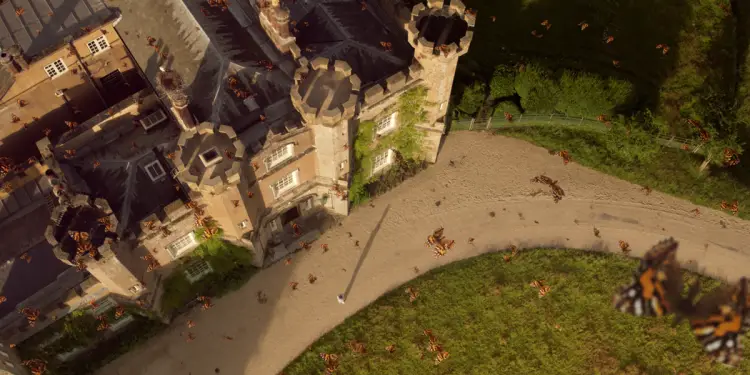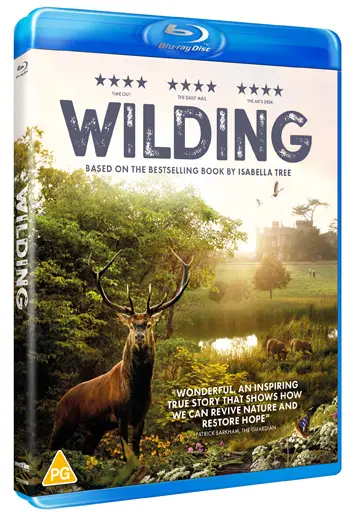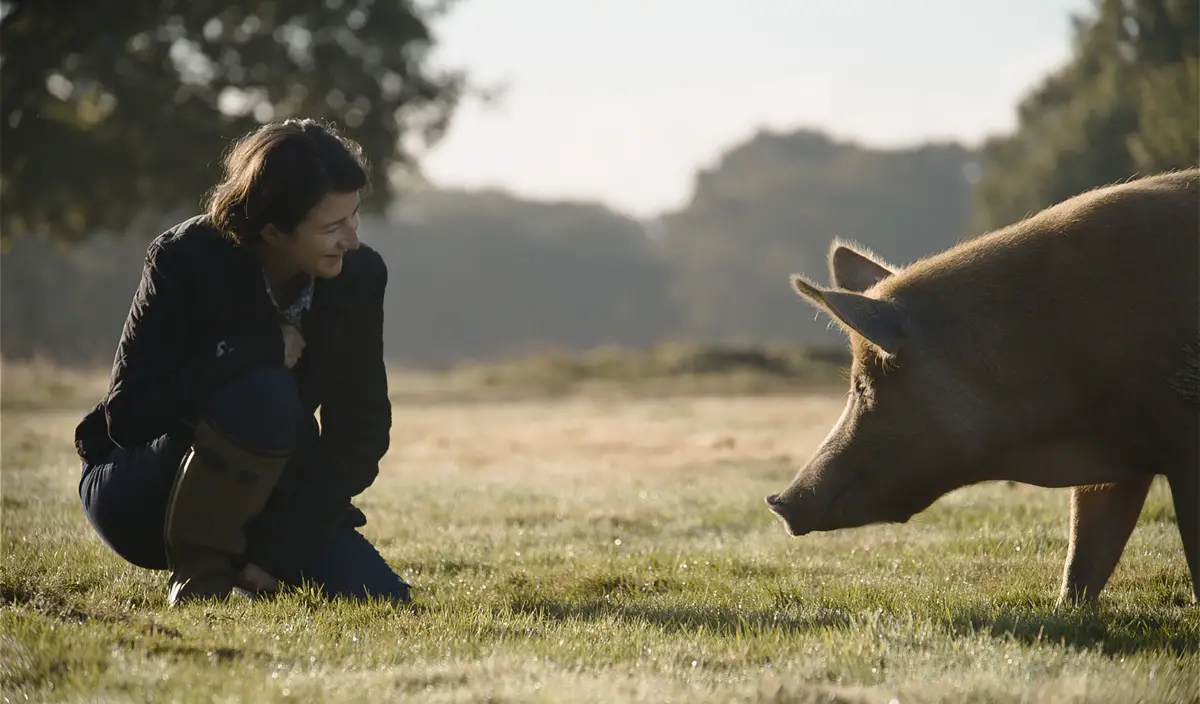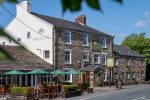Wilding (2024) – Documentary Review

By Elizabeth Stanforth-Sharpe
The Knepp Castle estate has been in the hands of the Burrell family since 1787, with Sir Charles Burrell, the 10th baronet, inheriting in 1987, at the age of 21. For 17 years, he and his wife, Isabella Tree, farmed the land intensively, employing fertilisers, pesticides, mechanical agriculture, and use of antibiotics for livestock, just as he had been brought up to do.
But in 2000, they realised that the soil that had been exhausted with a cocktail of chemicals for many years, wasn’t functioning as it should. Earthworms no longer played their part, essential microbes had been killed, and crops were depleted. Along with many farmers, they were surviving on government subsidies which, in turn, were being spent on more fertilisers and more pesticides, which perpetuated the damage being done. The land was no longer sustainable.
 Alongside this, there was a growing national concern that species of birds, butterflies, wildflowers, insects, and mammals once prevalent in Britain were disappearing. Could there be a connection between these losses and the state of the soil?
Alongside this, there was a growing national concern that species of birds, butterflies, wildflowers, insects, and mammals once prevalent in Britain were disappearing. Could there be a connection between these losses and the state of the soil?
The Burrells began to feel instinctively that there was.
“Revitalised”
They employed Ted Green, a leading arboriculturist, to look at the ailing ancient oak trees on the estate, to teach them how the mycorrhizal network had been damaged in the root systems that spread directly underneath their arable crops, and, most importantly, how they could begin to rectify the situation. Making the decision to change an ancestral landscape that has been farmed in a particular way for over 200 years is one that is loaded with doubts and guilt, and the day they auctioned off the machinery and livestock equipment was so painful that Charlie Burrell couldn’t bear to witness the proceedings, but deep in his heart he knew that this was how it had to be.
Moving forward, the Burrells removed fences, introduced wild Exmoor ponies, Tamworth pigs and ancient breeds of cattle, and tentatively watched to see how they would adapt to the seasons. After initial teething problems, they thrived.
The Burrell’s excitement as the soil revitalised, new species grew, and insects, mammals and birds populated the habitat, was not always matched by the neighbouring farms. They regarded the lack of controlled crops as the direct opposite of what farming should be about. They thought the estate was a disgrace, the Burrell’s were irresponsible, and the swathes of ragwort that had grown through were a poison threat to grazing animals. Public opinion was turning against them.
It was discouraging, but still they pressed on, emboldened by the numerous chain reactions of the wilding process. One such link was the wind distribution of willow seed. The rootling of the pigs turned up damp, moist soil that was perfect for the willow seed to thrive and grow. Willow is the food of the larvae of the Purple Emperor, one of the rarest species of butterfly. Knepp became home to the largest population of Purple Emperor in the country.
“Extraordinary moments”
In 2009, invasive creeping thistle was a major problem that could easily have had the whole project closed down, but, incredibly, for the first time in ten years, a migration of 11 million Painted Lady butterflies arrived in Europe from North Africa, and thousands descended on Knepp. They laid their eggs on the creeping thistle, the caterpillars fed on the plant, and the following spring not one creeping thistle grew on the estate.
As the remarkable stories continued, the public began to sit up and take notice of what was happening on the Knepp Estate, and today they flock to see the effects of rewilding nature for themselves.
That is the bare bones of the story, but I’ve only just touched the surface of how special this piece of cinematography is. It is about Knepp, but it is also about the importance of soil, the connections that are made when a horse leaves a print in the mud, the innate knowledge of animals to heal themselves, and so much more. Packed with extraordinary moments that open the viewer’s eyes to how sufficient and resourceful the natural world is when left to its own devices, every moment is photographically stunning, and the soundtrack is a perfect accompaniment. It is, in turns, enchanting, educational, and humorous, but it is also immensely hopeful and challenging.
Every one of us needs to be concerned about the environmental and ecological damage that is happening in our world, and whilst we can’t all be the keepers of estates like Knepp, we can all play our part in bringing about change in our own locales. Whether we are in in charge of acres, or gardening in our own back yard, we can witness the capacity of nature to rejuvenate itself.
Wilding is the inspiration as to just how profound long-term changes in mindset and action can be.
‘Wilding’ is out now on Blu-ray










